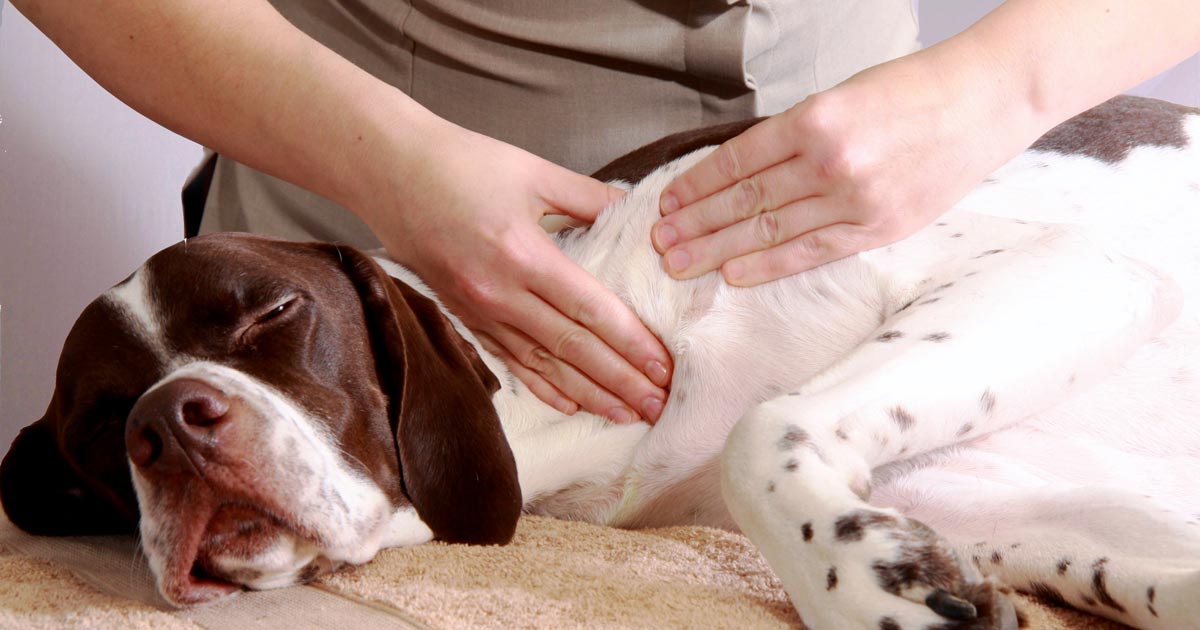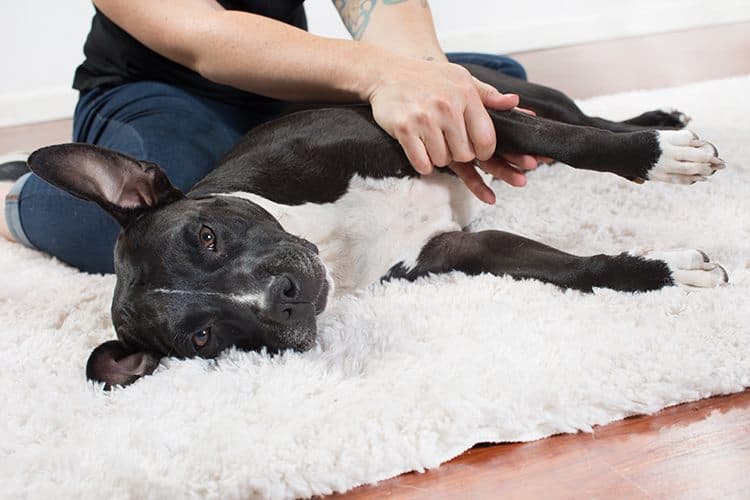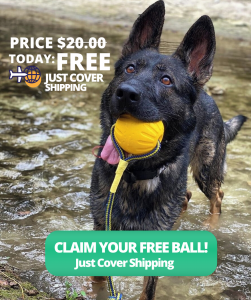
|
Because of the time restraints in today’s fast paced society, an important aspect of conditioning a dog is often neglected or cut short. I refer to the rubdown. Many experienced dogmen of the past gave their dogs 30 minute rubdowns daily because they had the time to spend and they were able to perceive the benefits of their efforts.
Today, there is a tendency to place more emphasis on the actual conditioning activity, followed by a very brief rubdown or no rubdown at all. When you are busy and have had a hard day at work, it is very tempting to cut your dog’s conditioning short. If you cut it short one day, you’ll do it again another day. It becomes easier and more tempting to end the workout before you are supposed to. We are all creatures of habit. (attitude) of “well, I’ll just quit a little early today, one day won’t matter,” then you are cheating your dog. You certainly don’t want your dog to quit a little early when his time comes. If however, you discipline yourself and have a habit of never cutting back on a dog’s program (in fact if there is doubt about the time, add a couple of minutes) then it gives your dog an edge. It is true that the most important factor is your dog’s inherited drive, but the handler plays a very important role in competing in weight pulling, schutzhund trials, wild boar hunting, tracking, or whatever – a dog’s owner tends to feel let down if his dog runs out of endurance and doesn’t perform to his maximum potential. Well then, perform your part to the best of your ability and don’t let your dog down. I’m referring to an esoteric, unique relationship between man and animal that is difficult to express in words, but to me, is what Dogs are all about.  In any event, since the rubdown is at the end of a dog’s workout, and because most people do not realize how extremely important it is, (they think it’s just something that is relaxing to the dog and establishes rapport with the dog, but that’s it, or they don’t think of it at all, they just do it because “you’re suppose to”), this is the part of the conditioning program most frequently cut. Knowing however, how vital a rubdown is if you desire to maximize the benefits of conditioning, can help provide the stimulus to live up to your duty to a fit dog.
The importance of the rubdown is perhaps more apparent if we understand what it accomplishes. A proper rubdown puts the animals body in a balanced metabolic state. Metabolism as defined here is “the busily process of transforming assimilated food into protoplasm (water, lipids, carbohydrated, and inorganic salts), breaking down protoplasm into waste matter, producing energy growth, and replacing worn out tissues.” The metabolic state is in chemical balance when an animal is not sick and activity is normal. If you understand the chemistry of muscle fatigue you can dramatically alter the negative side affects of grueling conditioning that makes a dog stiff and lame. When conditioning becomes demanding, overstressed fatigued muscles cause a disturbance of the metabolic chemical balance by not allowing the muscles enough time to relax and allow proper inflow of fresh blood to nourish the tissues.
 Lactic and carbonic acids accumulate in the muscles and surrounding tissues more rapidly than they are eliminated. These acids, particularly lactic, cause muscles to cramp and become painful and the dog will limp. Carbonic acid is carbon dioxide in tissue fluid. Lactic acid is accumulated glycogenic the muscle. The glycogen is eventually flushed out by flowing blood and tissue fluid though the lymphatic system, which is responsible for flushing out toxins and fluid wastes (such as carbonic and lactic acid) that accumulate in muscle, tissues, and blood.
After an extremely hard conditioning session, this process can take anywhere from a day to 3 days, especially if the dog has had 2 or 3 days of hard work without a rest break, or at the beginning of a conditioning program for a dog that doesn’t receive regular daily exercise. A properly applied and though rubdown will expedite the flushing out process and alleviate the pain by relaxing the muscle and stimulating a supply of oxygen rich blood to the area where it’s most needed. A dog instinctively knows this when he vigorously lick his wounds, bruises, or any sore, painful area. The pressure from his tongue stimulates blood flow and research has accomplished this.
In a research project to study the effects of massage on muscles, rabbits (animals that use their rear legs extensively) were used. Black Indian ink was injected into their leg muscles after which they were left to their normal daily routing. One group of rabbits had their legs massaged daily while the other group did not. Both groups were fed the same food and interacted together. After a month the legs of all the rabbits were dissected and the muscles studied. The leg muscles of the non-massaged group were stained black in the area of the injection site. The muscles of the massaged rabbits however, were pink with absolutely no trace of the Indian ink anywhere in the body! Indian ink is used in making tattoos, it has a lasting stain. There is also research available on the effects of massage on muscle endurance. In one study a man curled a 1 kilo (2.2 lbs) barbell to exhaustion; which for him was 840 times without interruption. His arm was then massaged for 5 minutes after which he lifted the same weight 1100 times in the same manner without fatigue! Another study found that a person capable of doing 50 pushups will after a 5 minute rest, be able to do about 10 more. the same person, however, can do about 35 to 50 more pushups if the muscles are rubbed down during the 5 minute rest interval. This indicates a nearly complete muscle recovery rate in 5 minutes! The studies were conducted at the turn of the century, but it took many years for the athletic world to pick up on the importance of the rubdown. The east athletics. Their olympic track team began using leg massage in the 1950’s and achieved repeated success. now all track teams of olympic level use it. Boxers have used rubdowns for years. Many human athletes receive an extensive rubdown just prior to competition. This pre-competition rubdown strengthens metabolism and the athlete has more energy. Some rub or massage an area called “stomach 36″, which is a pressure point located 4 fingers down the knee on the outside of the leg (side of the calf muscle). Stomach 36” stimulates the adrenal glands and provides energy for exhausting workouts. I know several people who give their dog 20 or 30 minute rubdowns just prior to bringing them to a working dog trial. Probably the most important contribution a professional rubdown gives to a dog’s condition is that it relieves stress to the central nervous system {CNS} and allows the CNS to handle more pressure. If a rubdown is given in conjunction with a shampoo and rinse this is particularly true. When shampooing the dog you should apply the massage techniques outlined further in this article. After rinsing, it takes sat least 30 minutes for the dog’s coat to dry while you hand rub, if you don’t towel dry. Do not put your dog away wet. Rubbing him dry assures you that you spend adequate time. After a hot demanding workout, the shampoo and massage is highly refreshing as well as relaxing. what it does is it rejuvenates the CNS. You’ve heard the expression that a chain is only as strong as it’s weakest link, the weakest link in a dog is not his muscles; it is not his lung power; it is the dog’s CNS.
It is my personal opinion that when time is spent with a quality rubdown as part of the conditioning process, that the dog’s “nerves” are stronger and the handler/dog bond is strengthened even further.
The rubdown procedure that I like is next. Many people who are serious about the rubdown will make a little table about waist high to put the dog on while massaging. Before the rubdown after a workout, get a damp sponge & wipe off the froth on your dogs muzzle (he should have froth if he’s been properly exercised) and wipe around his eyes, back of his ears, under his chin, groin area, and the butt. Begin by scratching him behind the ears and manipulating his jaw muscles. I like to rest the dog’s head on my knee while I do this, they love it. I relax myself during the rubdown. I believe your frame of mind is transmitted to the dog. I breath slowly using the diaphragm techniques I have learned in meditation. Quite often, I hum and this seems to relax both of us.  There are several ways to apply the message:
1. Stroking– This is when you glide your hand smoothly over the fur. Very little pressure is needed. This promotes venous circulation, stimulates the nervous system, and transmits energy (believe it or not) to the animal. 2. Friction– With this method you exert more pressure and your hands move in a circular motion. It promotes a deeper arterial tissue circulation than stroking, and it starts lymphatic flow. I find that the firmer hand pressure of friction relaxes the dog more than stroking and I generally begin massaging with friction and the bulk of the rubdown entails friction. 3. Kneading– A great deal of pressure is used here. You move your hands rhythmically over the dog’s muscles, kneading is primarily used when massaging the large muscle areas, squeezing and lifting the fur and muscles. Work in short circular patterns. This method pumps nutrient fresh blood into the area massaged and flushes out the toxins as I have explained. 4. Pulling and rotating joints– This phase helps maintain flexibility, strengthens ligaments and tendons, and boosts production of sensorial fluid (lubricating fluid found in joint cavities and in tendon sheaths).When you and your dog are relaxed, rub your hands slowly from the top of his head down along his vertebrae to his tail stroking several times. Rub and knead the neck muscles on both sides with circular motions at first, then rubbing back and forth. Work down to the base of the neck where the head meets the first vertebrae with small circular movements. Do not lift your fingers as you move down his back. After you have the back a few minutes, reach under his front leg with your right hand and begin with his left shoulder, pulling down across his chest all the way back to the top right stifle up high in the gut, then right down the right side, of the leg muscle. Do this going back and forth, one side then the other. keep your fingers together, not spread while stroking. You are much more effective that way because the heat and energy in your hand becomes concentrated. Try it on yourself and you should be able to discern the difference. You then roll the dog over on his back and scratch his belly. Stroke his belly with circular motions, which should keep going toward the chest. gradually work up the chest, and as you get to this massage, stimulating the abdomen, is very important because it will help clean out your dog. The digestive process becomes more efficient, production of gastric juices is aided, and urination is increased. Medical science research has shown this to be true. Understand this, the muscles receive no nutrition until the food is digested, assimilated into the blood, and then quality of nutrition received by the body parts depends to a large extent on the quality of the blood and lymph circulation. By massaging the chest, you clear the central lymph node of toxic build up and open up the system to flush out wastes accumulated in the muscles during heavy conditioning. Spend a good amount of time in this area.  Next, lay the dog on his side. Take his front paw in your hand and gently rotate it first in one direction, then the other. Pull gently on the paw to stretch the tendons. Sometimes I take each toe between thumb and forefinger and squeeze firmly. Grasp the bottom of his leg like you would hold a baseball bat and gently squeeze then rotate your hand back and forth slowly, so that the heat of your hand will penetrate. Always talk to your dog in a quiet conversational tone while doing this. It will establish rapport with him. work your way slowly up his leg kneading and stroking. Most of the leg-massaging with the fur, the feeling being that this is more comfortable to the dog. Contemporary dog massage technique calls for you to do the opposite. You always massage toward the heart. This squeezes out the lactic acid and other toxins and does it the most expeditious way. You’ll be going against the fur, but my experience concurs with what I have read. The dog enjoys the massage just as much as if you went with the fur. When you get to the shoulder muscle, spend some time kneading. Then hold his leg and rotate the shoulder joint. You can then start on the rear leg. You then go to the bottom of the rear leg, just as you did with the front, and massage it in a similar manner. Knead the tibias and metatarsals. This is the area above and below the hock (part of the dog’s rear leg that stick out like an elbow). When you finish, turn the dog over and repeat on the other side. The rubdown cannot replace conditioning for getting a dog into shape. There are no shortcuts, only long cuts. But do not cut the rubdown short; it is an important aspect of conditioning. Article By Bob Stevens. |
